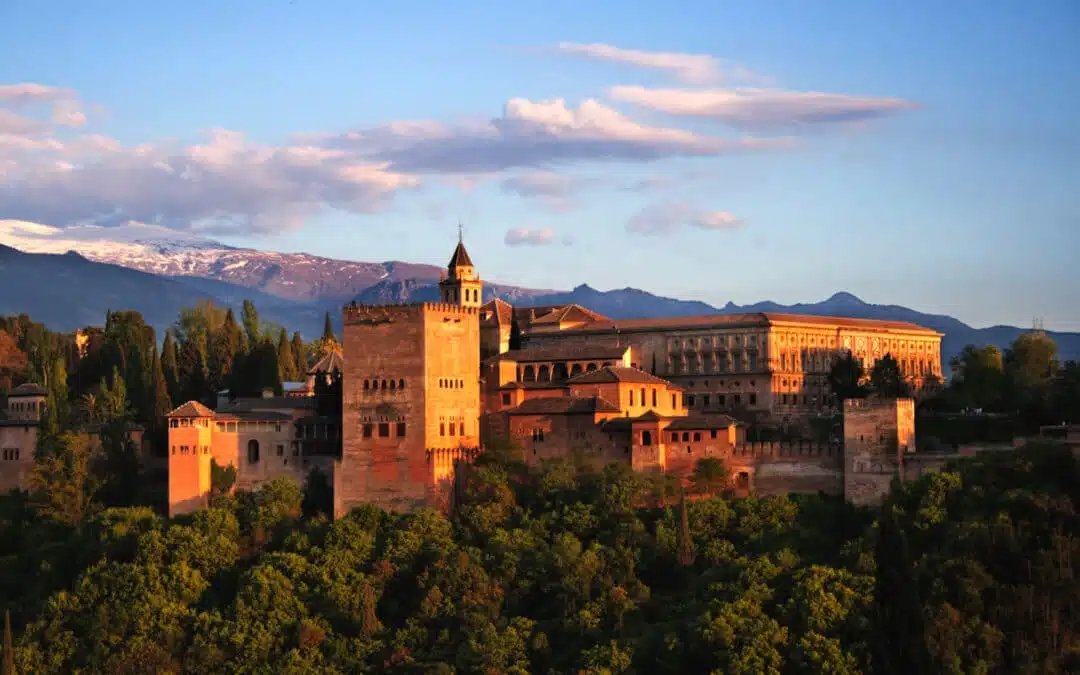10 fascinating facts about the jewel of Granada
A shining example of Moorish architecture, the Alhambra is Spain’s most visited monument. However, few visitors can claim to know all its secrets. We have uncovered ten of its best-guarded treasures just for you!
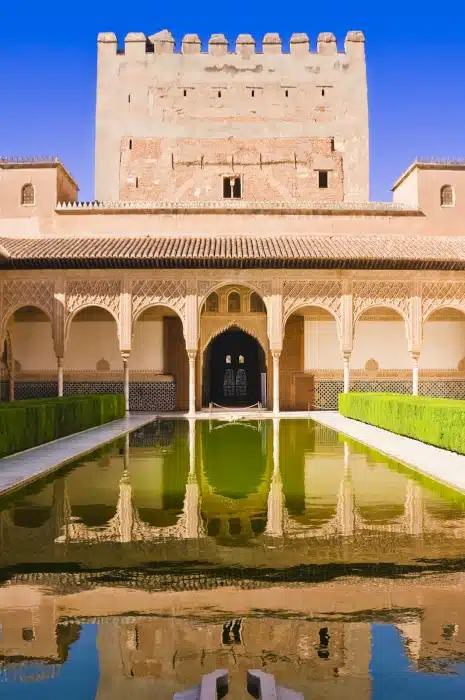
1. The red fortress
In Spanish, the palace is nicknamed la roja, meaning “the red one”, because of the colour of the stones used for its construction. In a similar vein, the word “Alhambra” comes from the Arabic phrase Qal’at al-Hamra, which translates to “the red fortress”.
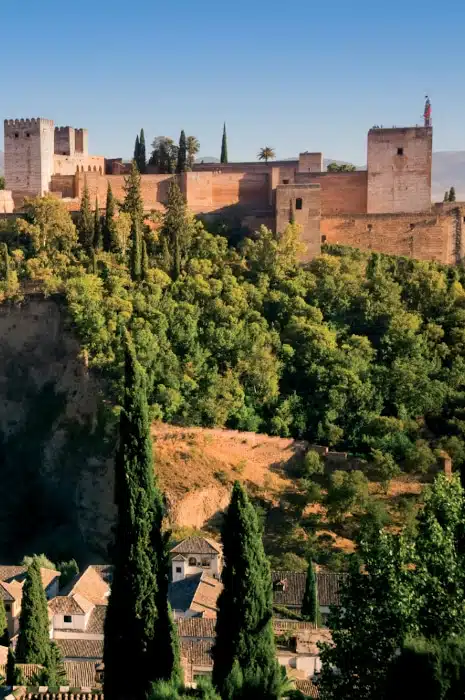
2. One landmark, two hills
Although the Alhambra is typically seen as a single structure, the Generalife, which served as a summer palace for the Nasrid princes, is separate from the rest of the complex. The main building is perched on Sabikah Hill, while the second palace stands on the Cerro del Sol.
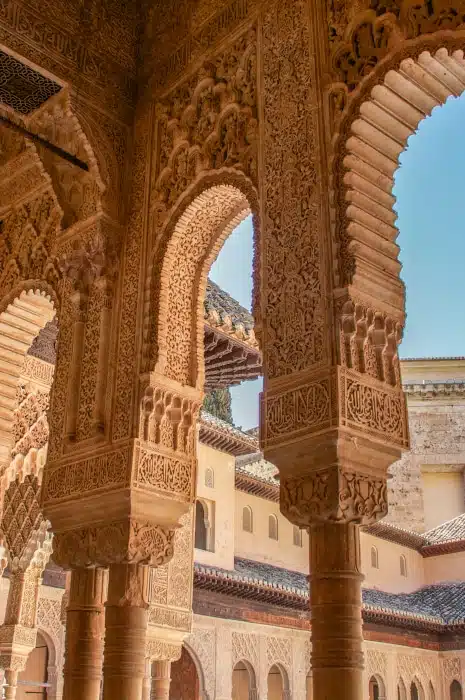
3. An impenetrable stronghold
The Alhambra did not become a royal residence until the 13th century, with the arrival of the first Nasrid king, Mohammed ben Al-Ahmar (Mohammed I, 1238-1273). It was during his reign that the palace achieved the splendour that we know today. The structure started life as a fortress, built by Sawwar ben Hamdun in 889, a time of great conflict between the Arabs and the Muladies (Christians who had converted to Islam). Various towers, the watch tower and the dungeon were added over the following years to strengthen the stronghold, whose breathtaking views of the Grenada region prevented any attacks.

4. Spectacular craftsmanship
No fewer than 10,000 Arabic inscriptions are carved into the stone that decorates the various rooms and courtyards of the palace. One particular tenet is repeated multiple times in these engravings: “Only God is victorious“, which is attributed to Zawi ibn Ziri, founder of the Nasrid dynasty.
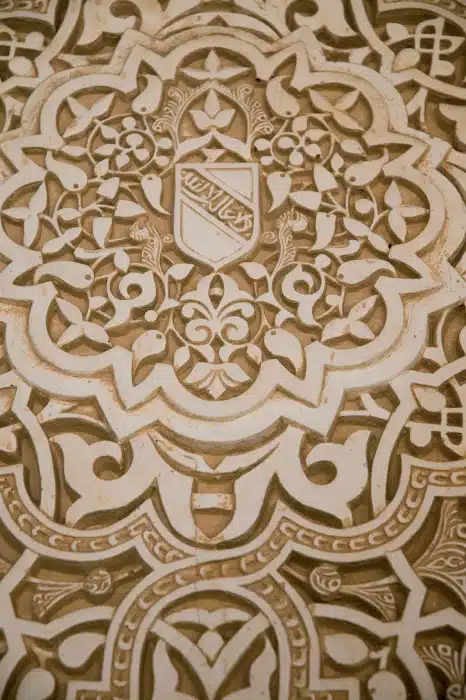
5. A poetic masterpiece
The walls of the Alhambra are adorned with many different texts, including several passages of calligraphy attributed to three poets from the court of Granada, Ibn al-Jayyab (1274-1349), Ibn al-Khatib (1313-1375) and Ibn Zamrak (1333-1393). All three of these figures served as secretaries of the royal chancery and prime ministers. Their texts can be seen on the portico of the Generalife, in the Tower of the Captive, in the Comares Tower, on the Fountain of the Lions, on the fountain in Daraxa’s Garden and in the Hall of the two Sisters. These poems all pay tribute to the king and the magnificence of the location.

6. Trompe-l'œil
The architects of the palace were instructed to adorn every room with sumptuous decorative features. They therefore created many richly decorated interior arches… which serve absolutely no purpose! These intricate details do not support the structure, but they are extremely beautiful.
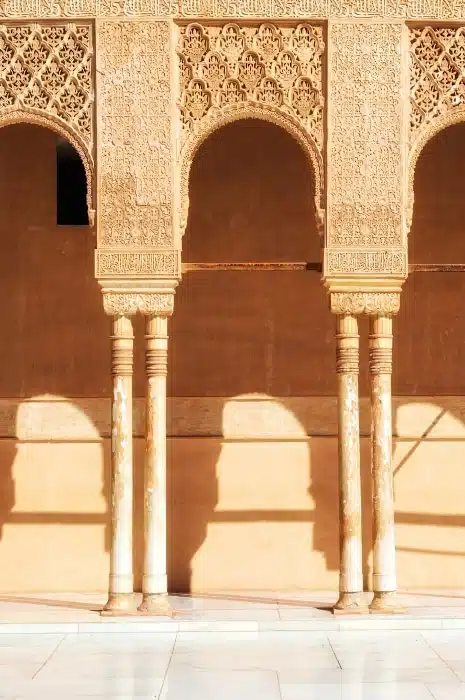
7. Unique columns
The columns of the Alhambra have never appeared in any other building. Their delicate design is sometimes used in multiples of two or three to support muqarnas, carved vaults that bring incredible depth and texture to the architecture. These columns are set apart by the concave moulding at the base, the rings on the upper section, and the capitals embellished with plant motifs.
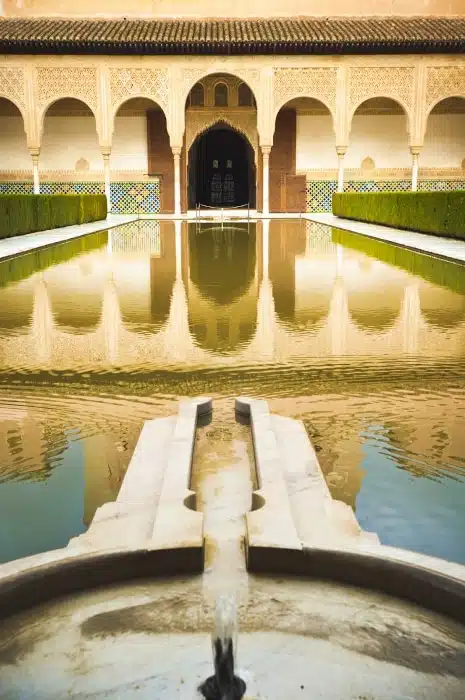
8. Diverse influences
The Court of the Lions is one of the best-known areas of the Alhambra. Inspired by Christian cloisters, its architecture is very different from the Moorish courtyards. The two axes that divide the courtyard are typical of Persian architecture. Finally, the octagonal shape of the garden, its fountains and four right-angled channels symbolise the cardinal points and the four rivers of paradise described in the Quran.

9. An ingenious irrigation system
The Nasrids wanted to recreate paradise as depicted in the Quran, with many gardens, orchards and streams, symbolising life and fertility. Fountains, basins and irrigation canals are therefore found throughout the Alhambra and the Generalife. Underground cisterns were used to capture and store the water flowing from the nearby mountains of the Sierra Nevada. The fountains are all reliant on gravity, powered using a system of communicating vessels without any need for pumps: a historical engineering marvel.

10. Remnants of Catholicism
Observant visitors can spot an interesting detail on the intrados of the arches of the Court of the Main Canal in the Generalife. They are actually embellished with the motto of the coat of arms of the Catholic Monarchs: “Tanto Monta”, which translates as “It’s all the same“. This expression represents the union of Isabella I of Castile and Ferdinand II of Aragon.
Photos credit : © iStock
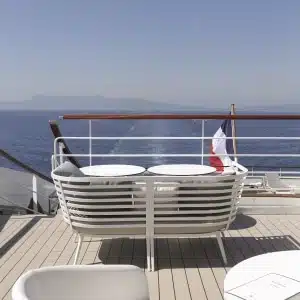
To discover
-
Everything you need to know before you go...
-
Go island hopping and reconnect with nature
-
Serge Guiraud introduces us to some of the world’s most unique cultures

